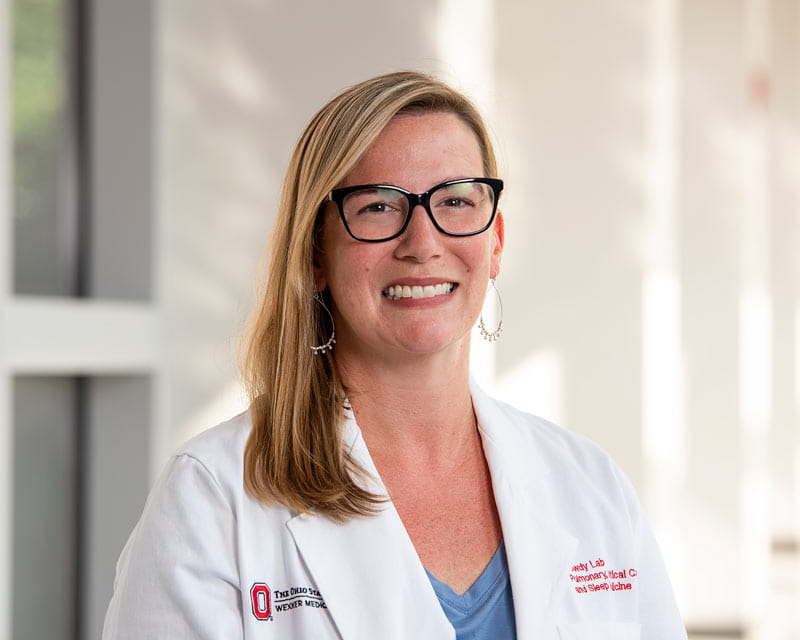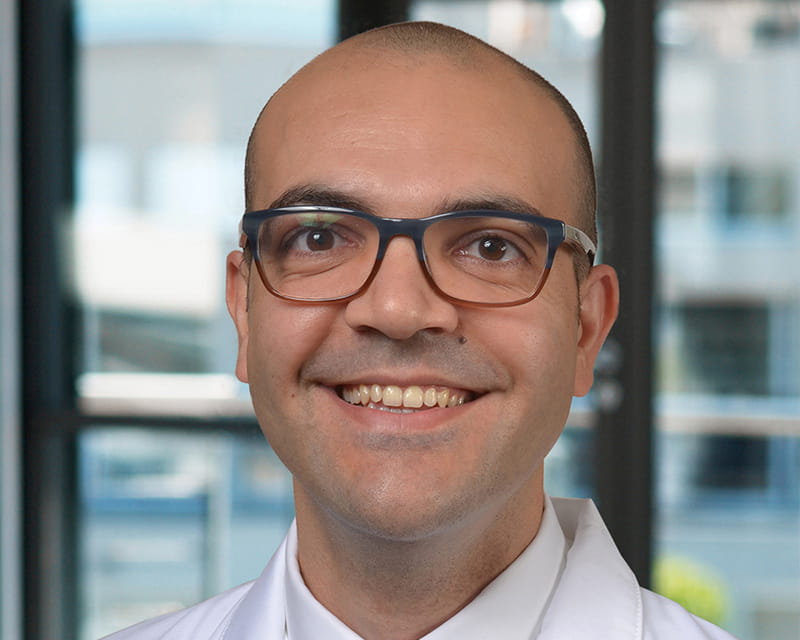
Ohio State Researchers Launch NIH-Funded Study on Ozone-Induced Pulmonary Inflammation
 A new, minimally invasive treatment available at The Ohio State University Wexner Medical Center helps patients with advanced chronic obstructive pulmonary disease (COPD) breathe better – without the risks of surgery.
A new, minimally invasive treatment available at The Ohio State University Wexner Medical Center helps patients with advanced chronic obstructive pulmonary disease (COPD) breathe better – without the risks of surgery.
Interventional pulmonologists in the Division of Pulmonary, Critical Care and Sleep Medicine now offer bronchoscopic lung volume reduction (BLVR) for people with severe emphysema. This procedure, which incorporates novel endobronchial valves, gives eligible patients an additional option for improving their lung function and quality of life.
The Ohio State Wexner Medical Center has a long history of improving outcomes among patients with COPD. In 1996, it was one of 17 medical centers chosen to participate in the landmark National Emphysema Treatment Trial, which validated the safety and efficacy of lung volume reduction surgery (LVRS) for certain patients – including those with upper lobe predominant emphysema and low exercise capacity. Its LVRS program was also the first in the nation to receive a certification of distinction from The Joint Commission.
Today, the interventional pulmonology team at the Ohio State Wexner Medical Center continues this tradition of innovation. In 2019, following the Food and Drug Administration’s approval of two new devices that provide a less invasive approach to lung volume reduction – the Zephyr and Spiration endobronchial valves – they began offering BLVR to patients with significant emphysema, hyperinflation and minimal collateral ventilation.
“When we implant these one-way valves into targeted airways, they redirect air away from the hyperinflated part of the lung,” says interventional pulmonologist Christian Ghattas, MD. “When the patient breathes in, the valves close, which prevents air from reaching the damaged part of the lung. When the patient exhales, the valves reopen to release trapped air. Over time, that diseased portion of the lung deflates and gets smaller.”
Dr. Ghattas, who is associate program director of the Ohio State Wexner Medical Center’s interventional pulmonology fellowship program, says this reversible treatment is intended only for patients whose COPD is already medically optimized.
“Although BLVR doesn’t replace medical treatment, when used in conjunction with medication, pulmonary rehabilitation or other therapies, it can significantly improve shortness of breath and exercise tolerance without the risks of surgery,” he explains.
At the Ohio State Wexner Medical Center, BLVR is just one of many treatments available to people with COPD. Some patients who might benefit from lung volume reduction aren’t candidates for surgery, while others still need traditional LVRS due to their emphysema distribution pattern. And for some patients with end-stage lung disease, a single or bilateral lung transplant offers the best chance of improved lung function and survival.
“We use a multidisciplinary approach to ensure patients receive care that’s customized to their type of COPD and their severity of symptoms,” Dr. Ghattas says. “Our team of interventional pulmonologists meets monthly with other providers who care for COPD patients, including COPD pulmonary specialists, thoracic surgeons, radiologists, pulmonary rehabilitation specialists and nurses. Together, we review cases and discuss which treatments are best suited to each patient, from bronchodilators and oxygen therapy to lung volume reduction or lung transplantation.”
Ohio State patients also have access to investigational COPD treatments through clinical trials. Studies currently enrolling include:
“Not only do we offer every available COPD treatment option including BLVR, but we also provide a variety of resources ranging from patient education and support groups to home medical equipment,” Dr. Ghattas adds. “Our goal is to make sure our patients have access to the most comprehensive care available, so they can breathe more easily and live life more fully.”
Learn more about innovations in care and research from the Division of Pulmonary, Critical Care and Sleep Medicine.